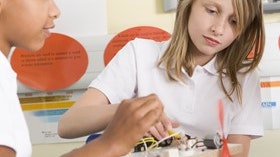Homepage
•
Learning Library
•
Blog
•
Great STEM ideas don't have to break the bank
Expand breadcrumbs
Expand breadcrumbs
- Learning Library
- Blog
- Great STEM ideas don't have to break the bank
- Homepage
- •
- Learning Library
- •
- Blog
- •
- Great STEM ideas don't have to break the bank
Great STEM ideas don't have to break the bank
By Team ISTE
November 10, 2015








